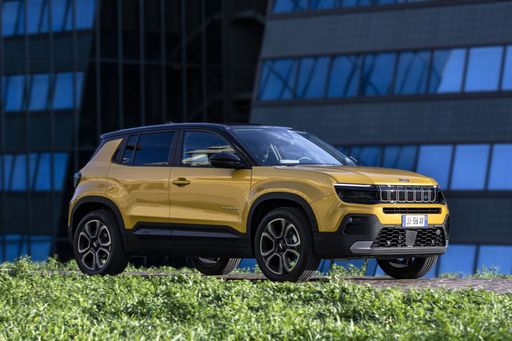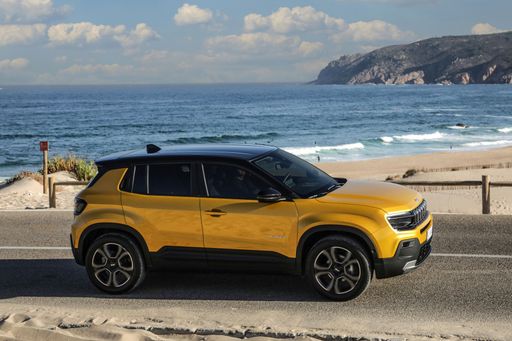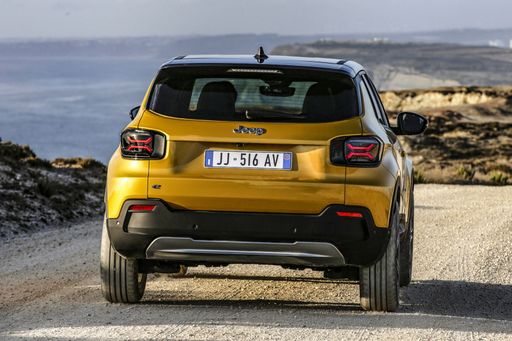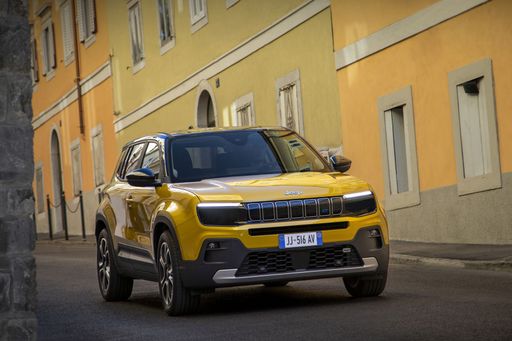Jeep Avenger vs MG HS/EHS – Differences & prices compared
Everyday use, family trips or long-distance drives – here’s where the differences show.
Discover whether Jeep Avenger or MG HS/EHS fits your lifestyle better.
Costs and Efficiency:
When it comes to price and running costs, the biggest differences usually appear. This is often where you see which car fits your budget better in the long run.
Jeep Avenger has a slight advantage in terms of price – it starts at 21900 £, while the MG HS/EHS costs 24000 £. That’s a price difference of around 2049 £.
Fuel consumption also shows a difference: MG HS/EHS manages with 0.50 L and is therefore clearly more efficient than the Jeep Avenger with 4.90 L. The difference is about 4.40 L per 100 km.
As for range, the Jeep Avenger performs decisively better – achieving up to 400 km, about 300 km more than the MG HS/EHS.
Engine and Performance:
Power, torque and acceleration are the classic benchmarks for car enthusiasts – and here, some clear differences start to show.
When it comes to engine power, the MG HS/EHS has a decisively edge – offering 272 HP compared to 156 HP. That’s roughly 116 HP more horsepower.
In acceleration from 0 to 100 km/h, the MG HS/EHS is noticeable quicker – completing the sprint in 6.80 s, while the Jeep Avenger takes 9 s. That’s about 2.20 s faster.
In terms of top speed, the MG HS/EHS performs slight better – reaching 195 km/h, while the Jeep Avenger tops out at 194 km/h. The difference is around 1 km/h.
There’s also a difference in torque: MG HS/EHS pulls evident stronger with 350 Nm compared to 260 Nm. That’s about 90 Nm difference.
Space and Everyday Use:
Beyond pure performance, interior space and usability matter most in daily life. This is where you see which car is more practical and versatile.
Both vehicles offer seating for 5 people.
In curb weight, Jeep Avenger is clearly perceptible lighter – 1180 kg compared to 1625 kg. The difference is around 445 kg.
In terms of boot space, the MG HS/EHS offers distinct more room – 507 L compared to 380 L. That’s a difference of about 127 L.
In maximum load capacity, the MG HS/EHS performs to a small extent better – up to 1484 L, which is about 207 L more than the Jeep Avenger.
When it comes to payload, Jeep Avenger evident takes the win – 502 kg compared to 400 kg. That’s a difference of about 102 kg.
Who wins the race?
The MG HS/EHS proves to be dominates this comparison and therefore becomes our DriveDuel Champion!
MG HS/EHS is the better all-rounder in this comparison.
MG HS/EHS
Jeep Avenger
The Jeep Avenger is a compact SUV that brings a blend of rugged design and modern technology, making it ideal for both urban and off-road adventures. Its robust build and distinctive styling capture Jeep's iconic spirit while offering a comfortable and refined driving experience. With advanced safety features and a versatile interior, the Avenger caters to a wide range of drivers looking for practicality and excitement.
details @ Stellantis
@ Stellantis
 @ Stellantis
@ Stellantis
 @ Stellantis
@ Stellantis
 @ Stellantis
@ Stellantis
 @ Stellantis
@ Stellantis
MG HS/EHS
The MG HS, also known as the EHS in its hybrid variant, is a midsize SUV that combines modern design with a focus on comfort and technology. Its spacious interior offers a premium feel, enhanced by quality materials and an array of advanced features aimed at ensuring a smooth driving experience. Known for its efficiency, the MG HS/EHS delivers an enjoyable ride whether navigating city streets or taking on longer road trips.
details

|
|
|
|
|
Costs and Consumption |
|
|---|---|
|
Price
21900 - 36900 £
|
Price
24000 - 36000 £
|
|
Consumption L/100km
4.9 - 5.7 L
|
Consumption L/100km
0.5 - 7.6 L
|
|
Consumption kWh/100km
15.50 kWh
|
Consumption kWh/100km
-
|
|
Electric Range
400 km
|
Electric Range
100 km
|
|
Battery Capacity
51 kWh
|
Battery Capacity
-
|
|
co2
0 - 129 g/km
|
co2
14 - 173 g/km
|
|
Fuel tank capacity
44 L
|
Fuel tank capacity
55 L
|
Dimensions and Body |
|
|---|---|
|
Body Type
SUV
|
Body Type
SUV
|
|
Seats
5
|
Seats
5
|
|
Doors
5
|
Doors
5
|
|
Curb weight
1180 - 1520 kg
|
Curb weight
1625 - 1930 kg
|
|
Trunk capacity
325 - 380 L
|
Trunk capacity
441 - 507 L
|
|
Length
4084 - 4088 mm
|
Length
4655 - 4670 mm
|
|
Width
1776 mm
|
Width
1890 mm
|
|
Height
1527 - 1541 mm
|
Height
1663 - 1664 mm
|
|
Max trunk capacity
1218 - 1277 L
|
Max trunk capacity
1291 - 1484 L
|
|
Payload
494 - 502 kg
|
Payload
400 kg
|
Engine and Performance |
|
|---|---|
|
Engine Type
Electric, Petrol, Petrol MHEV
|
Engine Type
Petrol, Plugin Hybrid, Full Hybrid
|
|
Transmission
Automatic, Manuel
|
Transmission
Manuel, Automatic
|
|
Transmission Detail
Reduction Gearbox, Manual Gearbox, Dual-Clutch Automatic
|
Transmission Detail
Manual Gearbox, Dual-Clutch Automatic, Automatic Gearbox
|
|
Drive Type
Front-Wheel Drive, All-Wheel Drive
|
Drive Type
Front-Wheel Drive
|
|
Power HP
100 - 156 HP
|
Power HP
170 - 272 HP
|
|
Acceleration 0-100km/h
9 - 10.6 s
|
Acceleration 0-100km/h
6.8 - 9.6 s
|
|
Max Speed
150 - 194 km/h
|
Max Speed
190 - 195 km/h
|
|
Torque
205 - 260 Nm
|
Torque
275 - 350 Nm
|
|
Number of Cylinders
3
|
Number of Cylinders
4
|
|
Power kW
74 - 115 kW
|
Power kW
125 - 200 kW
|
|
Engine capacity
1199 cm3
|
Engine capacity
1496 cm3
|
General |
|
|---|---|
|
Model Year
2023 - 2025
|
Model Year
2024 - 2025
|
|
CO2 Efficiency Class
A, D, C
|
CO2 Efficiency Class
F, B, D
|
|
Brand
Jeep
|
Brand
MG
|
What drivetrain options does the Jeep Avenger have?
Available configurations include Front-Wheel Drive or All-Wheel Drive.
The prices and data displayed are estimates based on German list prices and may vary by country. This information is not legally binding.
